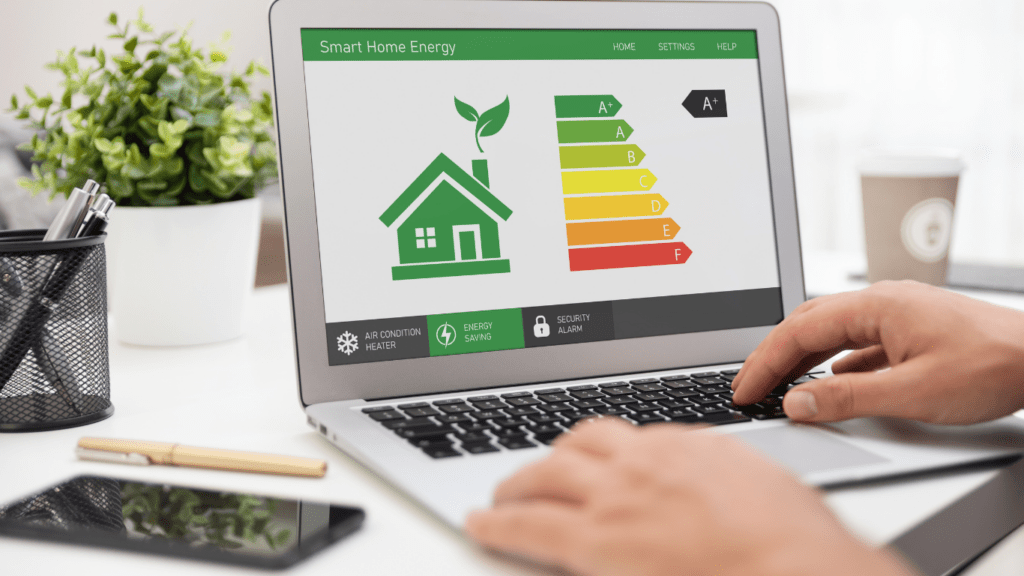Understanding Your Home’s Energy Usage
Accurately understanding your home’s energy usage is vital to effectively reduce consumption. By identifying high energy appliances and auditing your home’s energy efficiency, you can make informed decisions for savings.
Identifying High Energy Appliances
Certain appliances consume more energy than others. Start by identifying these energy hogs:
- HVAC Systems: Heating and cooling systems are often the largest energy consumers. Regular maintenance and proper settings can improve efficiency.
- Water Heaters: These appliances use substantial energy, especially if set too high. Lowering the temperature slightly can make a significant difference.
- Refrigerators and Freezers: Older models, especially those placed in warm areas, can be energy-intensive. Consider upgrading to energy-efficient models.
- Laundry Machines: Washing machines and dryers can use a lot of energy, particularly if used frequently. Utilize cold water settings and air-dry when possible.
- Lighting: Incandescent bulbs consume more energy than LEDs. Swapping to LEDs can drastically reduce energy use.
Auditing Your Home’s Energy Efficiency
Conducting an energy audit helps pinpoint areas for improvement.
- Professional Energy Audits: Hire a professional to perform a thorough assessment. They’re trained to spot inefficiencies you might miss.
- DIY Audits: For a more budget-friendly option, perform a do-it-yourself audit. Check for drafts near windows and doors, examine insulation, and assess the efficiency of appliances.
- Energy Monitoring Devices: Install energy monitors to track real-time usage. Some smart devices even offer usage analytics and tips for reduction.
- Insulation Check: Proper insulation in walls, attics, and basements is key to maintaining temperature and reducing HVAC load.
- Sealing Leaks: Identify and seal leaks in ducts, windows, and doors. Even small gaps can lead to significant energy loss.
Understanding your home’s energy usage by identifying high energy appliances and auditing efficiency reveals opportunities for substantial savings and eco-friendly practices.
Tips for Heating and Cooling Efficiency
Maximizing heating and cooling efficiency in your home can significantly reduce energy consumption. Here are some effective strategies to get started.
Upgrading to Smart Thermostats
Investing in smart thermostats contributes considerably to energy savings. These devices offer programmable settings that adjust temperatures based on your routines.
For instance, they lower the heating or cooling when you’re not home and resume when you return. Use features like remote control and energy usage reports to monitor and optimize settings.
Popular models like the Nest Learning Thermostat and the Ecobee SmartThermostat are efficient in regulating home temperatures.
Improving Insulation and Sealing Leaks
Improving insulation and sealing leaks prevents heat loss in winter and cooling loss in summer.
- Start by checking attic, walls, and floors for proper insulation.
- Use materials like fiberglass, foam boards, or spray foam.
- Seal gaps around windows and doors with weatherstripping or caulk.
For additional savings, inspect and seal ductwork and replace worn-out or damaged insulation.
Enhanced insulation maintains indoor temperatures and reduces the workload on HVAC systems.
Optimize Lighting and Electrical Use
Reducing energy use in your home requires optimizing lighting and electrical consumption. Efficient light bulbs and smart power management can significantly lower electricity bills.
Switching to LED Bulbs
LED bulbs consume up to 75% less energy than traditional incandescent bulbs, according to the U.S. Department of Energy. They last up to 25 times longer, requiring fewer replacements.
LED bulbs also emit less heat, reducing cooling costs. For example, replacing ten 60-watt incandescent bulbs with LED equivalents can save roughly $75 annually. Besides, dimmable LED options fit various lighting needs, enhancing comfort and convenience.
Using Smart Power Strips
Smart power strips help eliminate “vampire” electricity loss from devices in standby mode. They automatically cut off power when electronics aren’t used, saving both energy and money.
For instance, items like TVs, game consoles, and chargers draw power even when off, contributing to higher energy bills.
With a smart power strip, you control power flow easily, reducing unnecessary consumption. Integrating these into home office setups or entertainment centers optimizes daily energy use.
Water Heating and Use
Water heating accounts for a significant portion of home energy consumption. Making simple changes can lower your energy usage and save on costs.
Lowering Water Heater Temperature
Setting your water heater to 120°F reduces energy use without compromising comfort. Higher temperatures can result in energy wastage and potential safety risks.
Each 10°F reduction can save between 3% and 5% on water heating costs annually. Manufacturers often preset heaters at higher temperatures, so check your unit’s settings directly to make adjustments.
Installing Efficient Showerheads
Replacing traditional showerheads with efficient ones conserves water and energy. Low-flow showerheads use no more than 2.0 gallons per minute (GPM), compared to the standard 2.5 GPM.
This change cuts down water usage and reduces the burden on your water heater. Look for EPA’s WaterSense label when selecting showerheads for optimal efficiency.
By addressing water heating and use, you can significantly enhance your home’s energy efficiency.
Investment in Renewable Energy

Incorporating renewable energy sources into my home reduces energy expenses and environmental impact.
The Benefits of Solar Panels
Solar panels capture energy from the sun and convert it into electricity. A typical 6 kW solar system can produce around 7,750 kWh annually (based on Solar-Estimate), significantly reducing reliance on grid power.
By installing solar panels, homeowners not only save money on electricity bills but also benefit from renewable energy incentives and tax credits offered by various states.
Moreover, solar energy systems usually have a lifespan of 25-30 years, ensuring long-term savings. In regions with abundant sunlight, solar panels can offset energy costs by up to 100%.
Considering Wind Energy Solutions
Wind energy solutions provide another effective way to harness renewable power. Small residential wind turbines can generate between 400-20,000 watts, depending on the system size and wind conditions (U.S. Department of Energy).
For properties with sufficient wind resources (usually averaging 9 mph or higher), wind turbines can substantially reduce electricity costs. The installation of wind turbines is more suited to rural or suburban areas with ample space and less zoning restrictions.
By investing in wind energy, homeowners contribute to a sustainable future while enjoying reduced energy bills.




